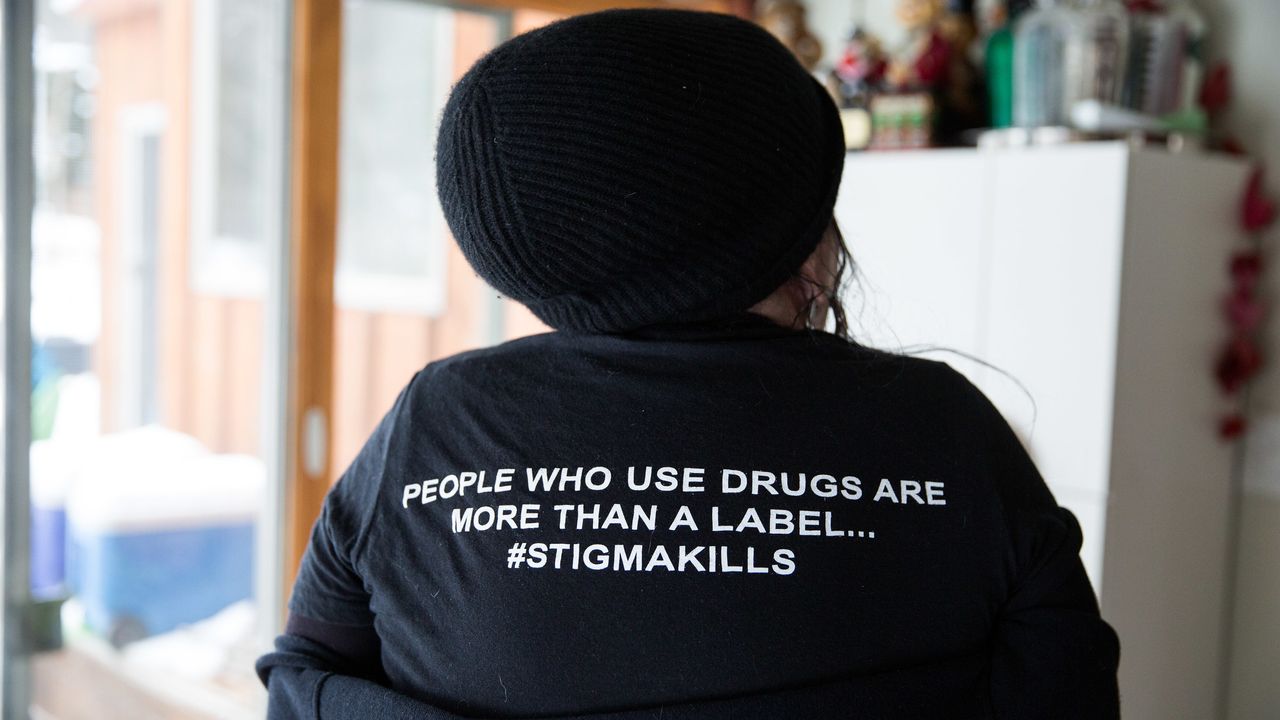Some days, Jess Tilley sits and talks with the parents of teens who’ve begun using heroin. On others, she lectures medical professionals on how to approach opioid users ― traveling to conferences to talk to colleagues about needle exchanges and drug-testing strips.
At 41, Tilley has two decades of experience working with people who use drugs ― and even more years as a drug user herself. Tilley is the founder of the New England User’s Union, a self-organized group of primarily opioid users working together to stay alive and fight the stigma of drug use, whether or not they’re trying to quit.
Sitting at the table of her colorfully decorated house, which doubles as the union headquarters, under a huge framed poster of pop icon Grace Jones, Tilley said the essence of user self-organizing is the same as with any union.
“My grandfather was part of an electrician’s union because they weren’t getting paid enough,” she said.
With 287 members divided into chapters around New England, NEUU is one of several unions of drug users around the country. Like labor unions, tenant unions and many other counterparts, drug user unions operate on the premise that people facing a common problem should work together to fight the systems that perpetuate it.
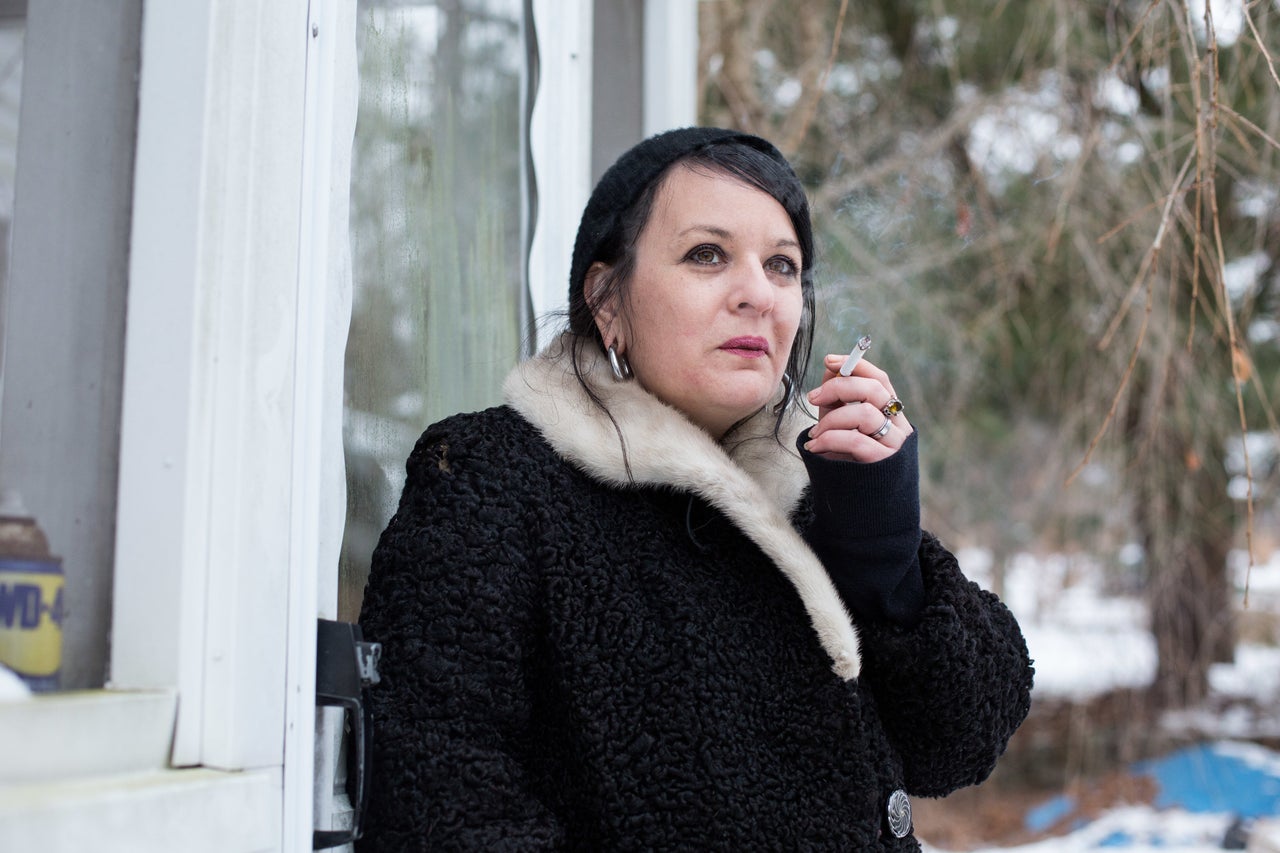
In the case of drug users, that means challenging laws that turn people struggling with dependency into criminals, educating each other about ways to stay relatively safe while using often-contaminated street drugs, and fighting the social stigma and internal shame that can make it even more difficult to escape self-destructive patterns of drug use.
The users’ unions represent an extreme version of the increasingly widespread philosophy that it’s better to keep people alive than to insist they have to be ready to quit before getting any help. It’s a philosophy that still comes under a lot of fire. Across the country, officials and voters routinely close down needle exchanges, ban supervised sites where people can use drugs more safely and even deny funding for the distribution of the emergency overdose treatment naloxone.
The question of how to address the use of dangerous drugs is getting increasingly pressing. Drug overdoses claimed the lives of 64,000 people in 2016 alone — more than the toll of HIV deaths at their peak in 1995, or car crashes at their worst in 1972 ― and opioids accounted for 34,000 of those deaths. As the death toll has climbed, particularly among the middle class, responses have begun to shift. Where criminal justice once dominated U.S. drug policy, there’s an increasing focus on providing help like methadone clinics and other medication-assisted therapy— a form of treatment that’s proven far more effective than abstinence-based programs, and certainly prison.
Harm-reduction interventions ― which try to keep drug users relatively safe and healthy, even if they’re not ready to quit ― are also on the rise. Last year, the federal government reversed a longstanding policy by agreeing to help fund needle exchange programs. And it’s becoming standard for emergency responders and even average citizens to carry naloxone, sold under the brand name Narcan, to reverse overdoses and save lives.

Opponents worry that these interventions divert money that could go to helping people stop drugs entirely, or that they actually enable people to continue using without regard for the consequences. As one Ohio sheriff put it, pointing to one person who’d been saved from an overdose on 20 separate occasions: “All we’re doing is reviving them, we’re not curing them.”
But there’s good evidence, apart from the very real dangers of drugs themselves, that stigma is central to the high numbers of preventable deaths among drug users ― and that working to reduce stigma can save lives.
“You find stigma affects people ... going to harm-reduction,” said Robert Terry Furst, an anthropologist at John Jay College of Criminal Justice in New York who studies drug use subcultures.
Furst said stereotypes of drug users go back to the 1920s, when doctors began classifying heroin users as morally degenerate and pathological. Despite growing recognition of addiction as a disease, he said, much of the public ― and many drug users themselves ― consider taking drugs to be a deep, shameful moral failing. Stigma and shame can also cause other problems for drug users, who commonly lose jobs because of the complications that obtaining and using an illegal substance creates in their lives. And, with many employers making drug tests a condition of employment, users often remain jobless, leading to a downward spiral.
“It’s not the drug per se,” Furst said. “They can function pretty well, but it is all the ancillary things around the drug.”
The union model is particularly effective because it recognizes drug users’ own expertise, putting power and agency back in their hands.
“Drug users have a lot of history and knowledge about drugs,” said Liz Whynott, a program director at Tapestry Health in western Massachusetts that runs needle exchanges and other harm-reduction programs, and sometimes partners with NEUU.
“A lot of staff and agencies feel like they are the experts and they know what’s best, and that just often turns into this power dynamic ... that will often very quickly shut the drug user down and make it so they don’t feel comfortable being honest.”

Whynott said people like Tilley who are willing to be open about their own use offer an important corrective to stereotypes of drug users as dysfunctional and hopeless.
The union model fights both the external barriers that make it harder for users to live functional lives and the dangers that accompany use.
Addressing Stigma First
When Tilley founded the group that became NEUU in 1998, she hoped to reverse users’ ingrained belief that their drug use put them in a state of disgrace.
At the organization’s first meeting, she and eight other people sat and talked about the problems they faced: being denied housing because of an arrest for drug possession, or having kids put into foster care after a parent was caught smoking a joint. Quickly, she said, she found that the people who were most enthusiastic and attended meetings most consistently were the ones who were using in dangerous, self-destructive ways. These members often felt they couldn’t talk about their use with others in their lives, but the union offered a non-judgmental place to begin coming to terms with their situation.
When the group decided to create a magazine, Tilley said, members jumped to make use of their talents.
“Having people say, ‘You know what? I’m a great editor,’ and ‘I can draw,’ and ‘I know how to do screen-printing,’ and ‘I have a friend that will let us use their space’ ― it was creating community,” Tilley said.
Tilley said the union also functions as a support group. It gives members a place to talk about the traumas that led many of them to abuse drugs in the first place, and to gain confidence and share their talents and expertise.
“One of the strongest things in the drug-using culture is community,” Tilley said. “One of the greatest misbeliefs is that we don’t care about each other.”
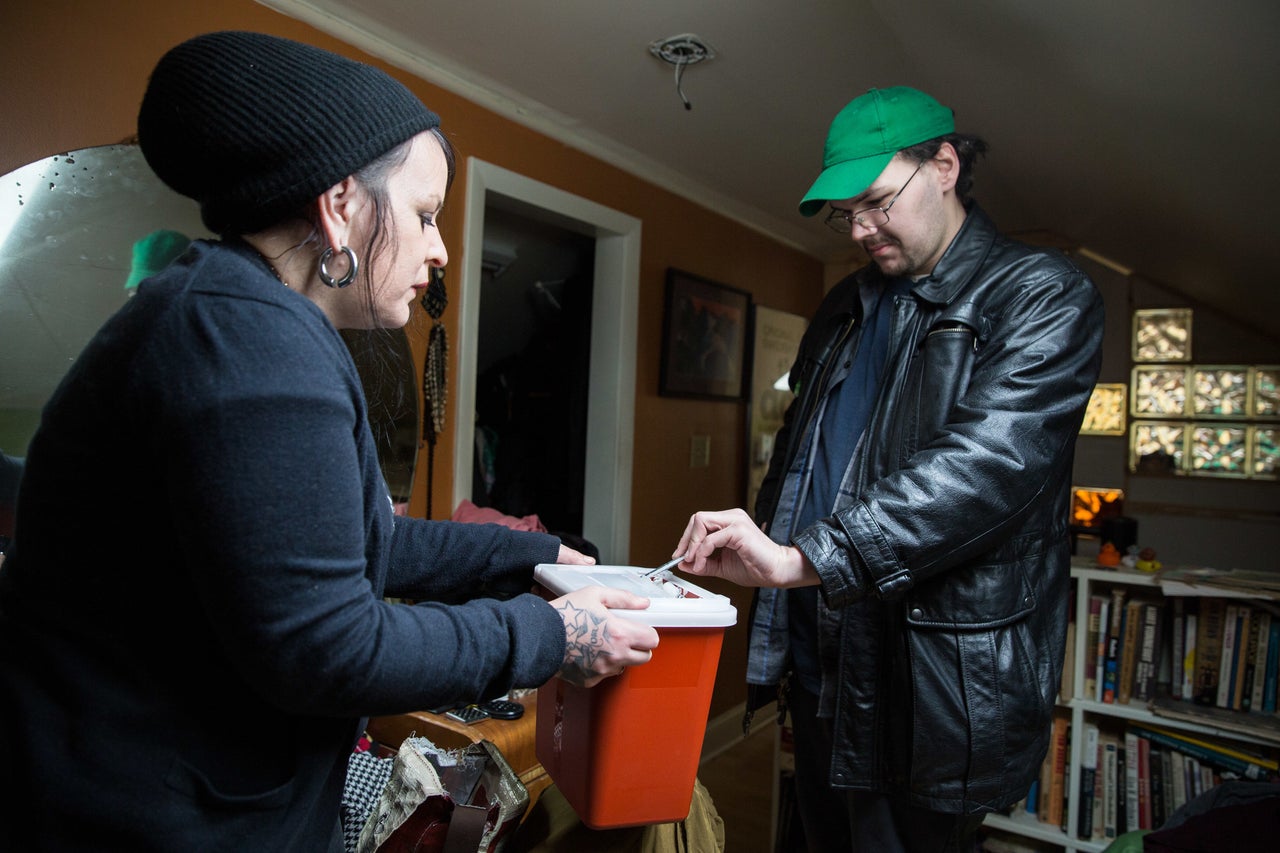
NEUU members began showing up to court cases when a fellow member was facing a housing dispute or challenging a search and seizure. Today, some members of the union run informal syringe exchanges out of their homes or teach their friends how to use naloxone. Some operate what’s essentially a tiny hotline, responding to overdoses by drug users who are reluctant to call 911 because they could lose their public housing or because they’re well respected in the community and don’t want to be outed as drug users.
Tilly said her union’s approach goes back to the height of the AIDS crisis, when groups like ACT-UP combined public activism with harm-reduction work. In fact, she said, harm-reduction really started long before official nonprofits got involved, back when needle exchanges were illegal.
“Injection drug users were the ones that were going out in the streets in the middle of the night to shooting galleries with book bags on their backs and exchanging syringes,” she said.
In some cases, Tilley said, as members stabilize their lives and get engaged in prevention work, they end up quitting drugs, often moving into medication-assisted therapy. Others, like her, find ways to keep using in a way that they don’t find disruptive to their lives.
“I know a lot of people that are incredibly high functioning, and whether they’re current drug users or whether they have a history or whatever, they do not talk about it with anybody because of the shame around it,” Whynott said. “What Jess is doing is incredibly courageous. Identifying as a drug user is rare because of the stigma people face.”
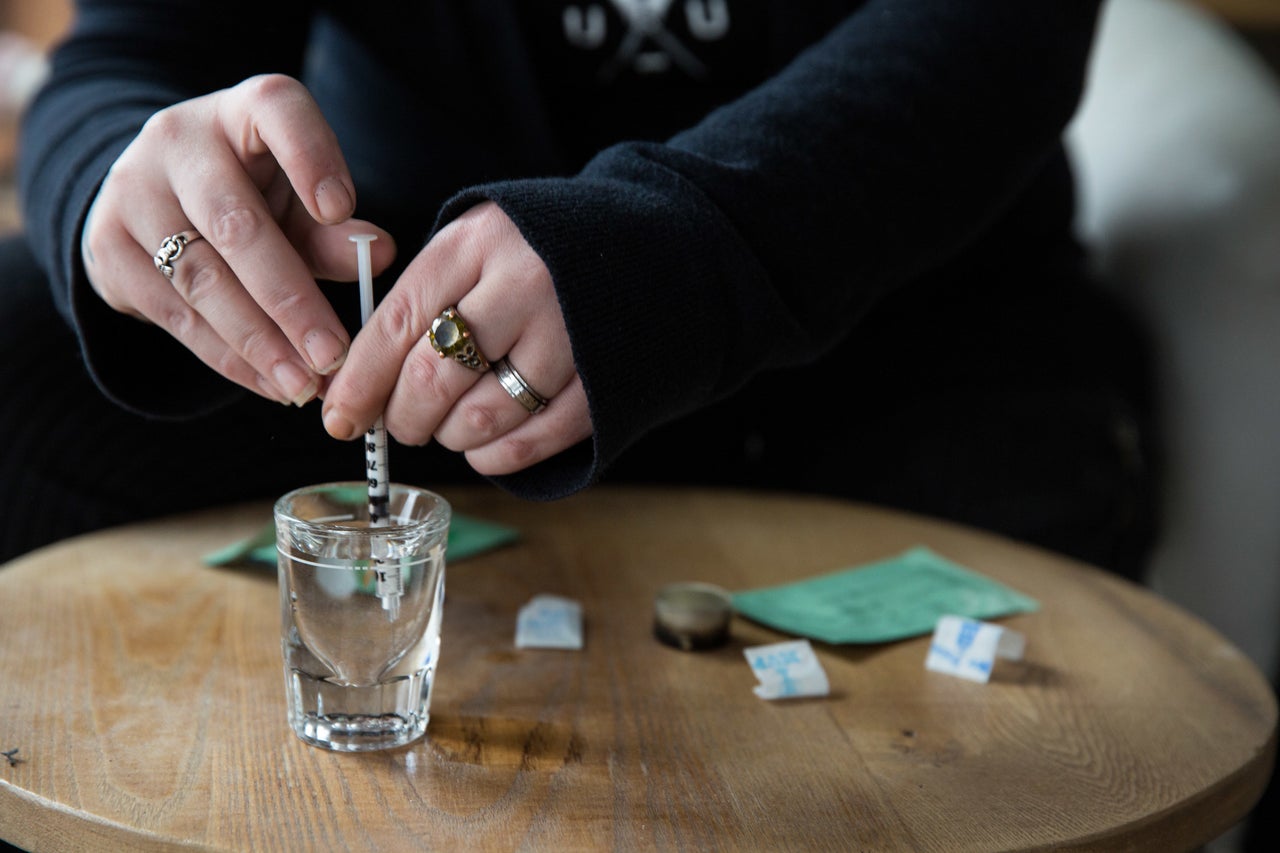
Getting Help Without Getting Clean
Tilley’s own work in harm-reduction goes back to the days when she was using in a dangerous, uncontrolled way. She said she used heroin for the first time at 15. After a friend’s use spun out of control, she got scared enough to quit. But then, at 18, she was raped, and she returned to heroin as a way to cope with trauma.
“I say this adamantly ― heroin saved my life,” she said. “Because if it hadn’t been for heroin, I would have killed myself. I had written out my suicide notes.”
At first, Tilley said, her drug use was the kind we typically see in media depictions of heroin addiction ― uncontrolled, dangerous, and exacerbated by the intense stigma of being seen as a junkie. She got kicked out of college and overdosed more than once. But, over years of therapy, she began addressing her trauma and found new coping mechanisms.
In many stories about drugs, this is where the user would finally “get clean.” That’s not Tilley’s story, though she did go to meetings with Alcoholics Anonymous and Narcotics Anonymous for a while.
“It works great for a lot of people, but I knew it wasn’t what I wanted,” she said. “I hate the word ‘clean.’ I didn’t want to stop. I just wanted to figure out how to use safely.”
She learned safety precautions ― things like using clean needles, testing her drugs, and never using alone. And she devoted herself to helping other users do the same, ending up taking jobs in the harm-reduction field alongside colleagues who assumed she’d quit drugs.
“People would say, ‘It’s amazing you were able to stop using. Look how great you’re doing,’” she said. “Meanwhile, I’m going home and getting high at night.”
The idea of using opioids in a functional way is controversial. Tilley herself said it doesn’t work for a lot of people. Kathryn Hawk, a professor at the Yale School of Medicine, said, compared with other drugs, opioids’ interactions with the brain make it particularly likely that people who use will fall into a substance use disorder. But she said it’s not universal.
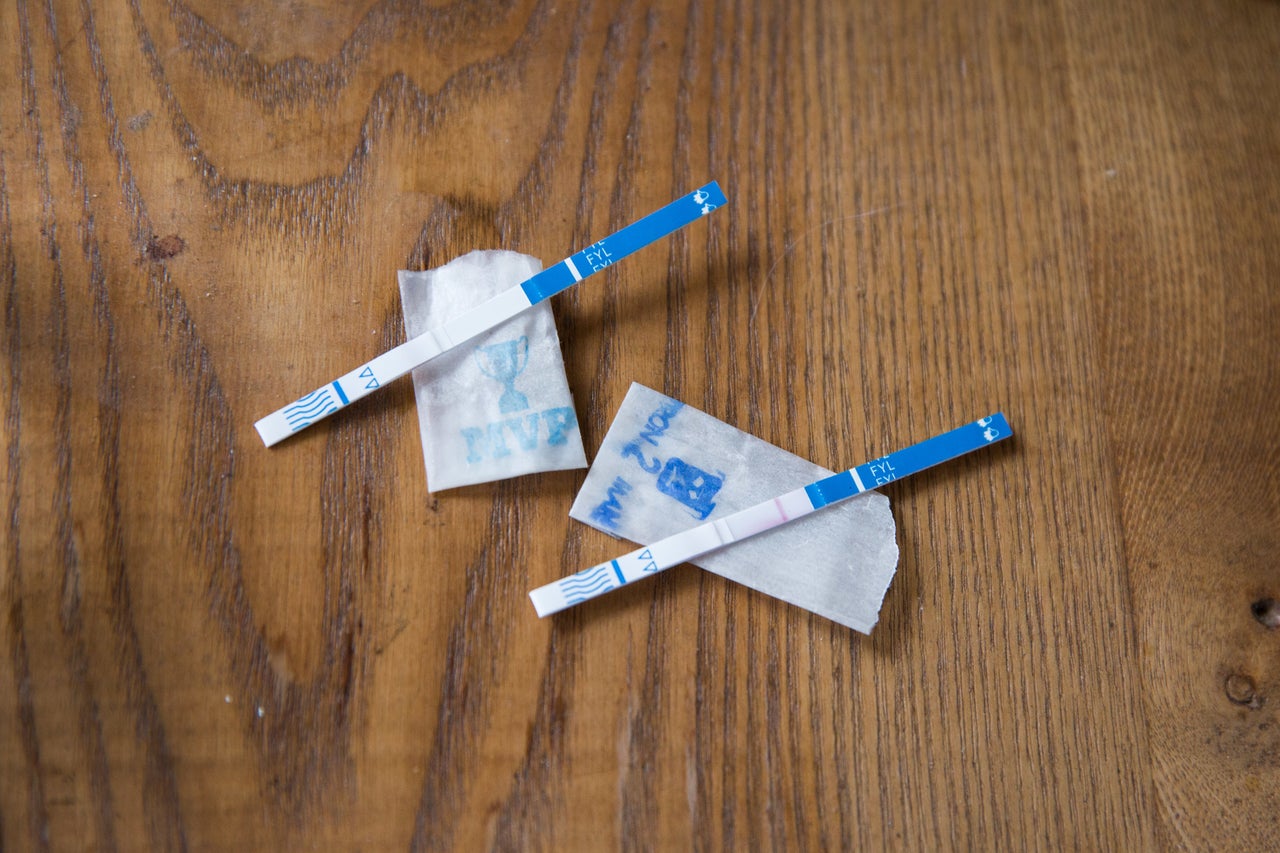
“Everyone that uses an opioid doesn’t necessarily have an opioid use disorder,” Hawk said. “We know that opioid use is a continuum, much like alcohol.”
Tilley is careful never to glamorize drug use. She said that withdrawal is every bit as awful as you’ve heard. And she’s had numerous friends and colleagues die of overdoses. She supports a range of options, from 12-step programs to medication-assisted therapy, for people who want them.
But she said the near-demonic popular depictions of drug addicts isn’t accurate. Even at her worst, she said, she would never have stolen from family members for a fix, and she said most of the drug users she knows are able to maintain similar moral guidelines even when their use spirals out of control.
Today, Tilley said, she has set clear boundaries on her drug use. She uses opioids and other powerful drugs only on “special occasions,” never alone, and never too frequently.
“I know that if I use certain substances more than a couple of days in a row, I’m dependent,” she said.
Meanwhile, she’s working full-force on fighting the wave of overdoses that has been rising in New England in recent years. She’s developed relationships with local police, and also with drug dealers. She said that, contrary to popular image of dealers as heartlessly willing to mix their wares with deadly additives, the ones she knows tend to believe they’re selling pure heroin until she pulls out her test strips and shows them that it’s contaminated with fentanyl. Some have pulled the drugs off the streets when they realized how dangerous they were, she said.
At its heart, Tilley said, NEUU’s work is about connections, and about helping drug users to help each other, develop their own skills, and speak up within their communities.
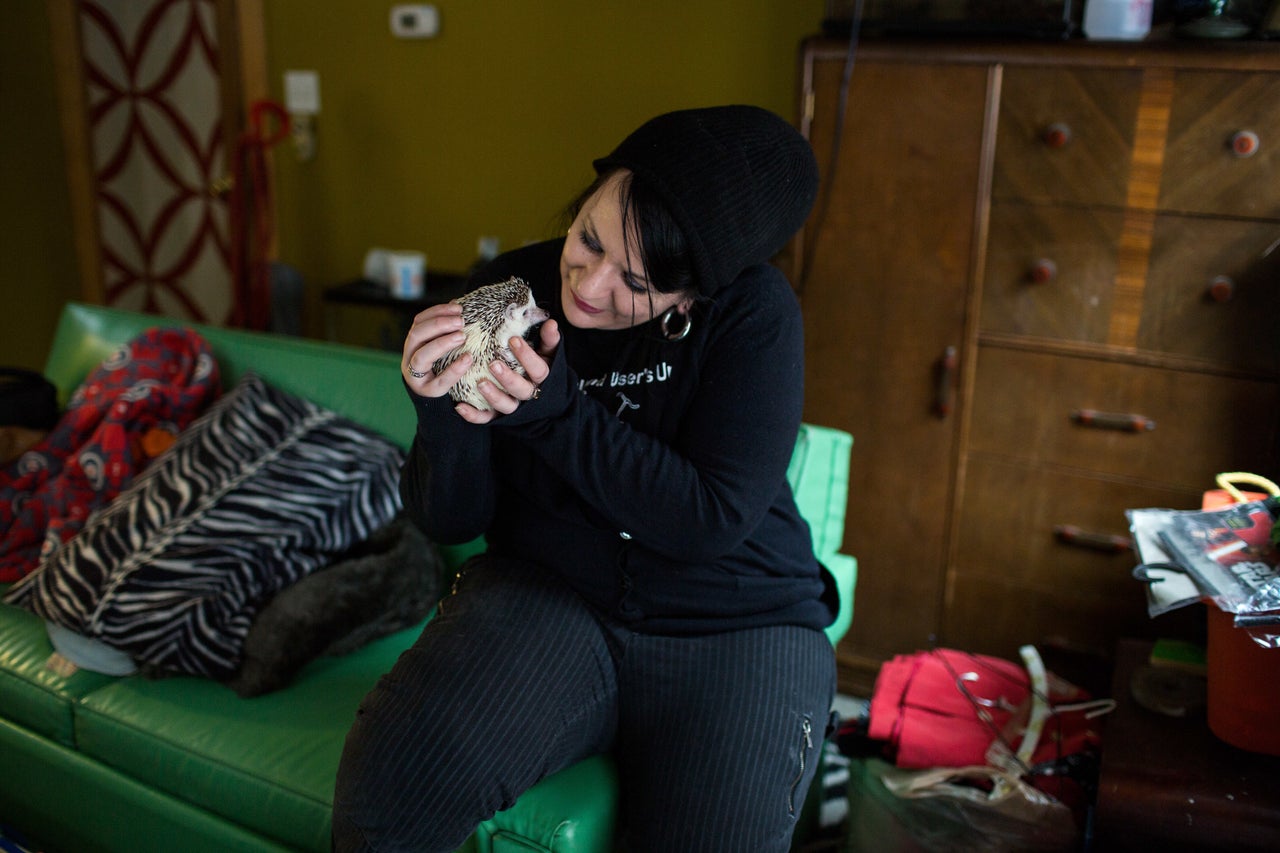
A Growing Mission
NEUU’s work has its challenges. Funders and other institutions aren’t always eager to support a group of unrepentant drug users.
For four years, until January, Tilley led the group ― and woke up at night for emergency Narcan runs ― while also working full time at a pet supply store. Often she paid for syringes and other supplies out of her own pocket. After getting laid off from the pet store because of budget cuts in January, she threw herself into the work full time, but she’s struggled to cobble together a living from consulting gigs here and there.
Now, she’s working with a partner to form a new organization to develop street outreach teams, share harm-reduction best practices with other organizations, and develop tools for fighting the local opposition that often develops around needle exchanges and other facilities. It’s called HRH 413 ― 413 for the western Massachusetts area code, and HRH for Harm Reduction Hedgehogs, in honor of the adorable and tenacious creatures Tilley keeps as pets.
As the overdose epidemic continues to claims lives, Tilley hopes the new organization will allow her and her colleagues to expand their work with grant funding ,and engage more people in meeting drug users where they are.
“We will not be silenced,” she said. “We’re taking our lives back. We’re sick of dying behind closed doors because of stigma and stereotype.”
CORRECTION: A previous version of this story indicated Tilley was working with two partners to form HRH 413. In fact, she is working with a single partner on the project. A previous version of this story also mischaracterized the total number of drug overdose deaths in 2016 as opioid overdose deaths.
